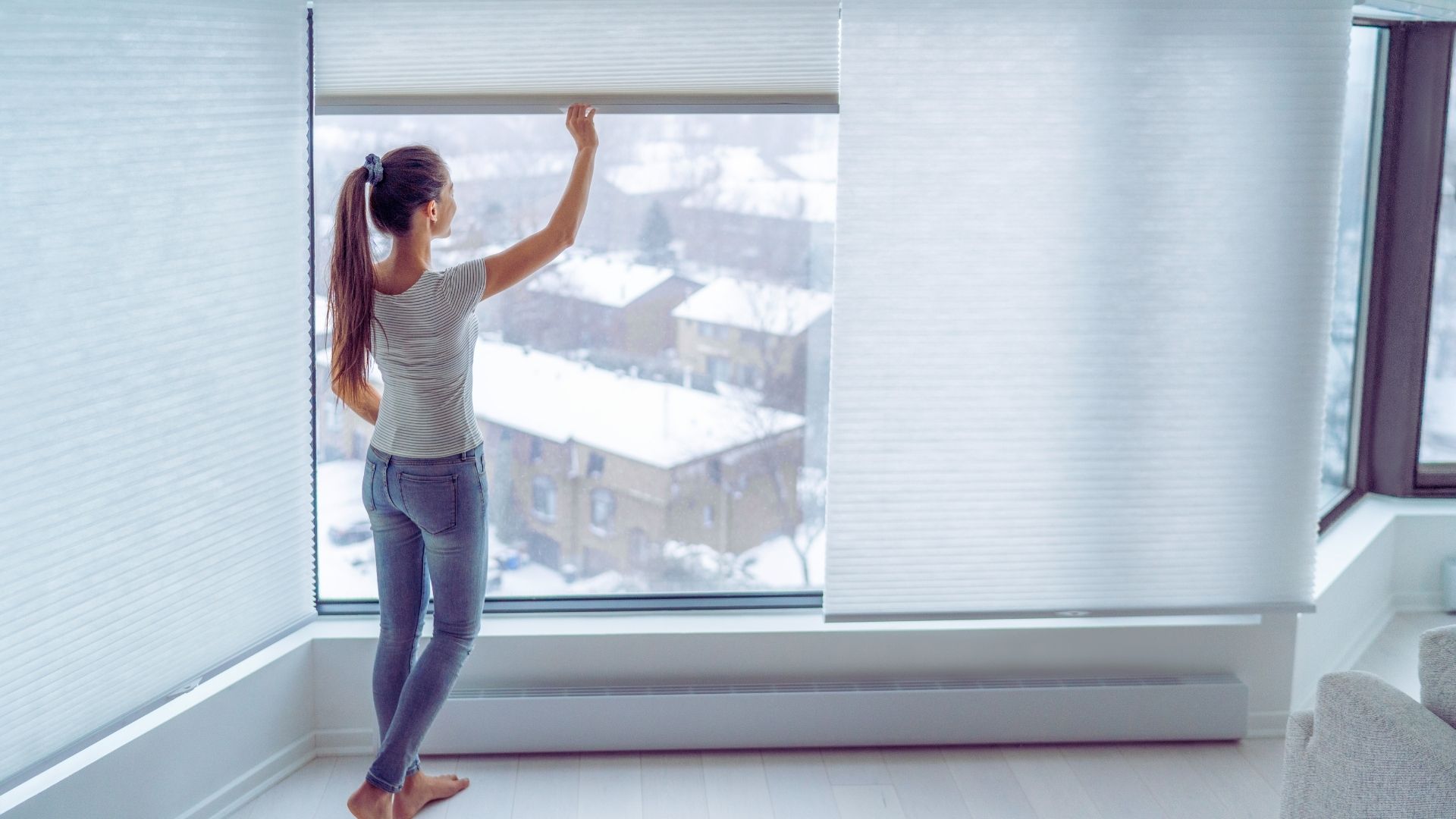As the crisp air of fall settles over Michigan, homeowners begin the annual ritual of prepping their homes for colder weather. While many focus on sealing drafts or upgrading insulation, one often-overlooked solution can make a surprising impact on your energy bill: energy saving shades—specifically, cellular shades.
These innovative window treatments don’t just add style and privacy; they’re engineered to trap heat, reduce drafts, and dramatically improve your home’s thermal efficiency. In this article, we’ll explore how cellular shades work, why they’re ideal for fall and winter, and how investing in energy saving shades can lead to real savings on heating costs.
Why Heating Costs Spike in Fall
As temperatures drop, your furnace works harder to maintain a comfortable indoor climate. But windows—especially older or single-pane ones—are notorious for heat loss. According to the U.S. Department of Energy, windows can account for up to 30% of residential heating and cooling energy use. That’s a huge opportunity for improvement.
Even with double-pane glass, heat can escape through conduction and convection. The solution? Add a layer of insulation that’s both functional and beautiful: energy saving shades.
What Are Cellular Shades?
Also known as honeycomb shades, cellular shades are made of pleated fabric that forms a series of hexagonal cells. These cells trap air, creating a barrier between your window and the room. The result is a powerful insulating effect that helps keep warm air inside during fall and winter.
Key Features of Cellular Shades:
- Thermal insulation: The air pockets reduce heat transfer.
- Light control: Available in light-filtering or blackout options.
- Privacy: Ideal for bedrooms, bathrooms, and street-facing windows.
- Style versatility: Comes in a wide range of colors and textures.
- Cordless options: Safer for homes with children or pets.
How Energy Saving Shades Reduce Heating Costs
Let’s break down the science. Heat naturally moves from warmer areas to cooler ones. In fall, that means your indoor heat wants to escape through windows. Energy saving shades act as a thermal barrier, slowing this transfer and keeping warmth inside.
Real-World Impact:
- Up to 20% reduction in heat loss: Especially with double-cell designs.
- Lower thermostat settings: Because rooms stay warmer longer.
- Reduced furnace cycling: Less wear and tear on your HVAC system.
- Monthly savings: Homeowners report saving 10–25% on heating bills.
These benefits compound over time, especially in Michigan’s long heating season. And unlike bulky window insulation kits, cellular shades offer year-round beauty and usability.
Ideal Rooms for Energy Saving Shades
While every room can benefit, some spaces see the biggest impact:
Living Rooms
Large windows and sliding glass doors are common culprits for heat loss. Installing energy saving shades here can dramatically improve comfort.
Bedrooms
Blackout cellular shades not only insulate but also block light for better sleep. They’re perfect for chilly Michigan mornings.
Home Offices
If you work from home, keeping your workspace warm without cranking the heat is a smart move—especially with rising energy costs.
Sunrooms
These glass-heavy spaces are beautiful but inefficient. Cellular shades can transform them into cozy retreats even in late fall.
Comparing Cellular Shades to Other Window Treatments
| Window Treatment | Insulation Level | Energy Efficiency | Seasonal Use | Style Options |
| Cellular Shades | ⭐⭐⭐⭐⭐ | ⭐⭐⭐⭐⭐ | Year-round | Extensive |
| Roller Shades | ⭐⭐ | ⭐⭐ | Summer | Moderate |
| Drapes | ⭐⭐⭐ | ⭐⭐⭐ | Winter | High |
| Shutters | ⭐⭐⭐ | ⭐⭐ | Year-round | Limited |
Cellular shades consistently outperform other treatments in energy efficiency, especially when chosen with double or triple-cell construction.
Eco-Friendly Benefits of Energy Saving Shades
Beyond personal savings, energy saving shades contribute to a more sustainable lifestyle. By reducing your reliance on heating systems, you lower your carbon footprint. Many manufacturers also offer shades made from recycled or responsibly sourced materials.
If you’re interested in eco-conscious home upgrades, check out Energy.gov’s guide to window treatments for more insights.
Installation Tips for Maximum Efficiency
To get the most out of your energy saving shades, proper installation is key.
Inside Mount vs. Outside Mount
- Inside mount: Fits within the window frame for a clean look.
- Outside mount: Covers the entire window area, offering better insulation.
Layering
Pair cellular shades with curtains or drapes for added thermal protection and aesthetic depth.
Automation
Motorized shades can be programmed to open and close based on time of day, maximizing solar gain during daylight and insulation at night.
Cost vs. Savings: Is It Worth It?
While cellular shades may cost more upfront than basic blinds, the long-term savings are compelling.
Example:
- Installation cost: ~$300–$600 per window (depending on size and features)
- Annual heating savings: $150–$300 per year
- Payback period: Often within 2–3 years
Plus, many local utility companies offer rebates for energy-efficient window treatments. Be sure to check with DTE Energy or Consumers Energy for current programs.
Choosing the Right Energy Saving Shades
When shopping, look for:
- R-value ratings: Higher R-values mean better insulation.
- Double or triple-cell construction: More cells = more trapped air.
- Fabric type: Thicker materials insulate better.
- Color: Lighter colors reflect heat; darker ones absorb it.
Consulting with a local expert ensures you get the right fit for your windows and climate. That’s where a trusted window decor store comes in.
Ready to Save on Heating Costs?
If you’re ready to upgrade your home with energy saving shades, fall is the perfect time to act. Not only will you enjoy immediate comfort, but you’ll also see the benefits on your next energy bill.
Contact Window Decor Store today to schedule a free consultation. Their team of experts will help you choose the perfect cellular shades for your space, style, and budget.



